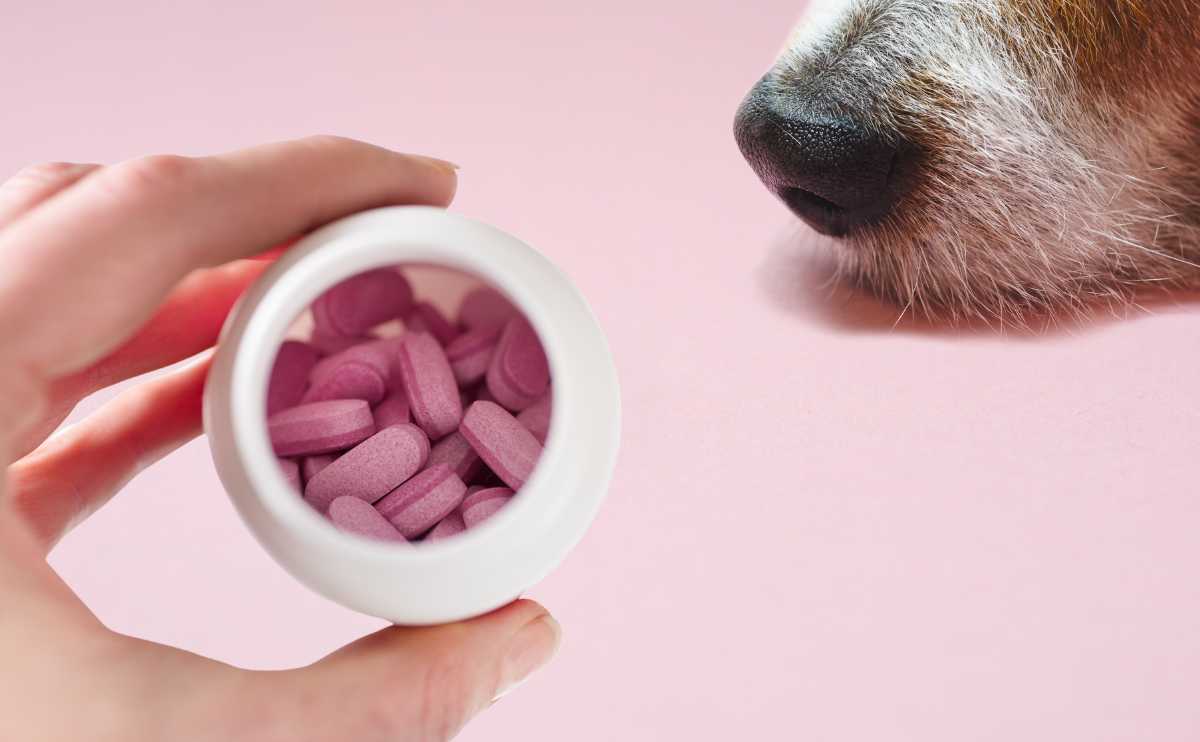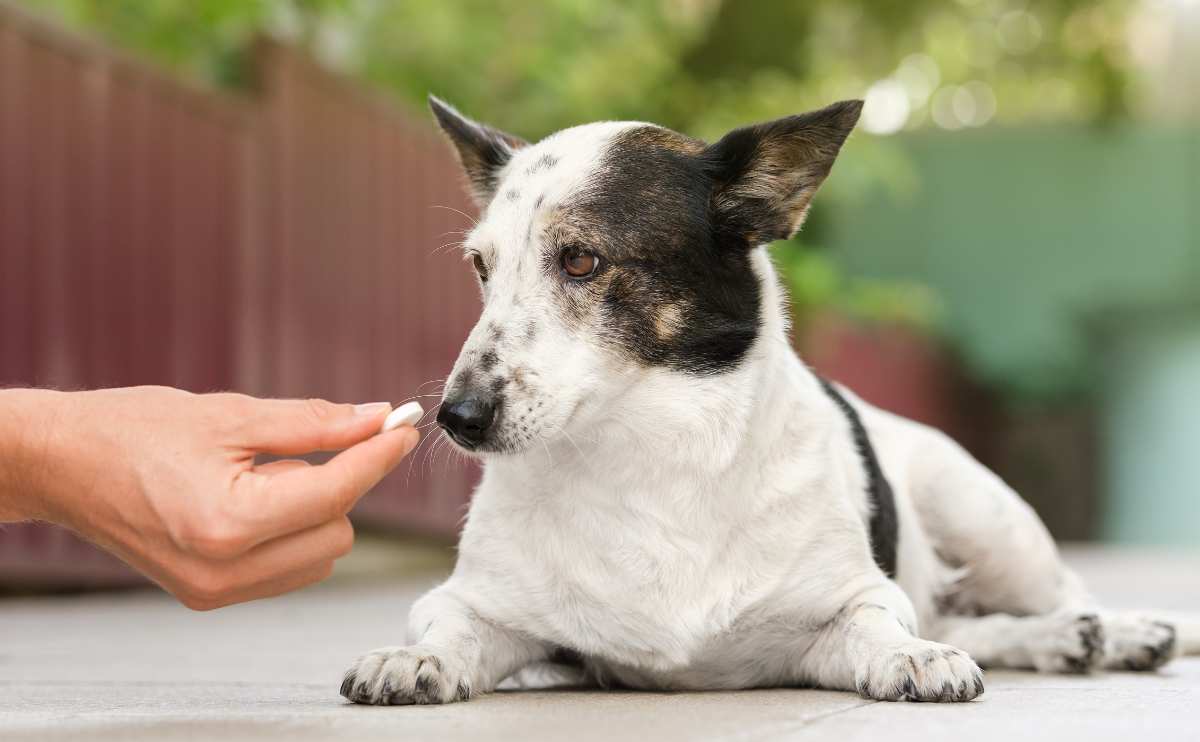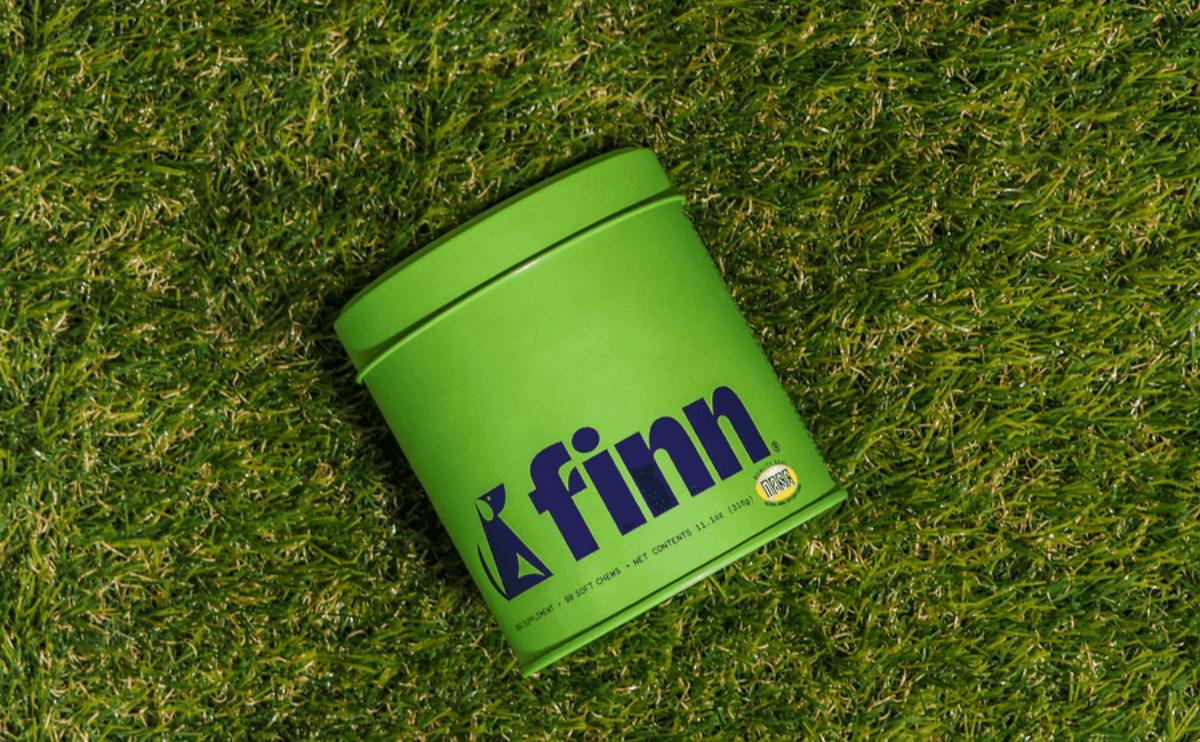When you purchase through links on our site, we may earn a commission. Here’s how it works.
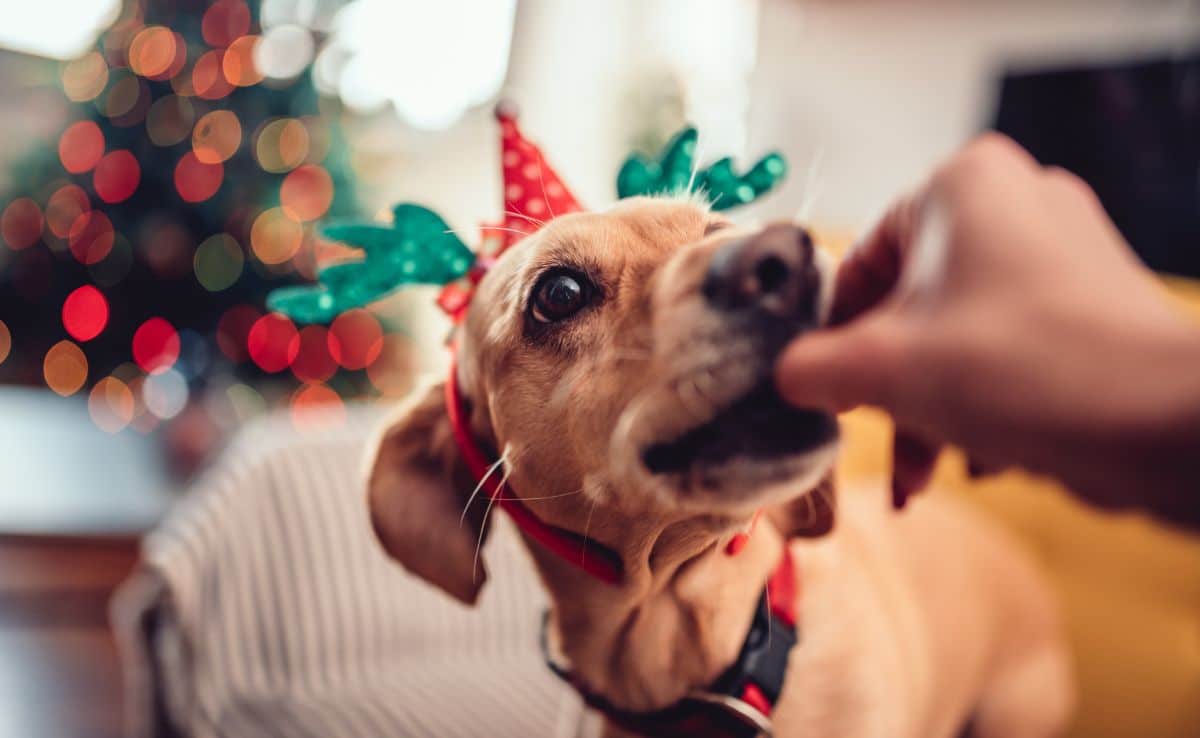
While the holidays can be the most festive season for us, they can also be the most hazardous time of year for our four-pawed family members. Fortunately, there are some simple things you can do to help make sure our dogs and cats enjoy a healthy, happy holiday season.
Protecting your dog from these easily overlooked top four holiday hazards for pets could not only spare them (and you) a lot of pain but could also save you a lot of money on emergency veterinary bills. Every year, I travel home for the holidays with our dog, and we have to remind our family (and kids) of these tips, too, especially when it comes to food.
Dangerous Holiday Foods To Avoid
With the holidays come a cornucopia of delicious foods. Unfortunately, some of our favorites for humans can be dangerous or even fatal for the furry ones in the house. I know that cute face might be begging you for a nibble, but resist the temptation to let Fido indulge in the holiday feast.
The first step to protecting your pet from food poisoning is keeping them on a regular diet and cautioning your guests against sharing their food with anyone with more than two legs.
These are common holiday foods that are hazardous for dogs:
Chocolate
Chocolate contains a chemical compound called theobromine, which can be severely toxic for dogs. Your pooch’s response will vary depending on its size, the amount of chocolate consumed, and how pure it is (the higher the percentage of cocoa, the greater risk of toxicity). Symptoms could range from vomiting, diarrhea, fast heart rate, restlessness, and hyperactivity, to increased urination, muscle spasms, and seizures. If you suspect your dog has gotten into the chocolate, take them to the vet immediately.
Sugar-Free Pinwheel Peppermints & Other Xylitol-Containing Items
If your dog eats the sugar-free version of this classic red-and-white hard candy or anything containing xylitol, including certain kinds of gum, toothpaste, and baked goods, rush them to the vet immediately because xylitol poisoning can be fatal. The same plant-derived substance as xylitol is also called “birch sugar” or “birch sap” in ingredient listings and can be just as toxic for dogs.
Fortunately, symptoms happen very quickly after ingestion, so you should be able to get your pooch the help they need to get back on their paws in no time. Vomiting is generally the first symptom, followed by decreased activity, weakness, staggering, loss of coordination, collapse, and seizures. Some dogs develop more severe complications, including liver failure and bleeding disorders.
Peppermint is also a toxic substance for dogs. So it is best to keep candy canes out of canine reach for several reasons.
Fat Trimmings & Bones
You (and your dog) may see no harm in sharing some of the trimmings, but your dog’s body will beg to differ. Cooked or uncooked fat can cause pancreatitis in dogs. Also, curb your urge to give your dog a bone, as bones are a choking hazard and, if they splinter, can cut your dog’s digestive tract. Just check out Atlas’s story in the video below and his $7,000 in vet bills!
Read our Full List of Foods that are Toxic for Dogs
Tinsel, Ribbon & Ornaments
Tinsel and ornaments may not be toxic, but they can still be hazardous to your dog or cat’s health if they get stuck in their throat or tangled up in their tiny intestines. A little nibble and gulp of one of these tempting new toys dangling off the tree or placed within paws’ reach around the house could cost your pet their life or take a huge bite out of your savings if you don’t already have pet insurance.
Since cats love string, they’re more apt than dogs to pounce at the chance to play with tinsel that moves with the flick of a tail. So, if tinsel is an essential part of your holiday décor, be sure to hang it well out of pouncing range.
The same goes for ornaments. If you don’t securely hang your fragile favorites high up on the tree or place them where they can’t easily fall and shatter on the floor, your curious dog or cat could get a nasty cut. And, if they swallow a piece, they could choke or get many tiny cuts in their tender mouth, throat, or even worse, in their intestines. Hooks can also be a serious choking hazard and hurt a dog if they play with them, or worse, swallow one.
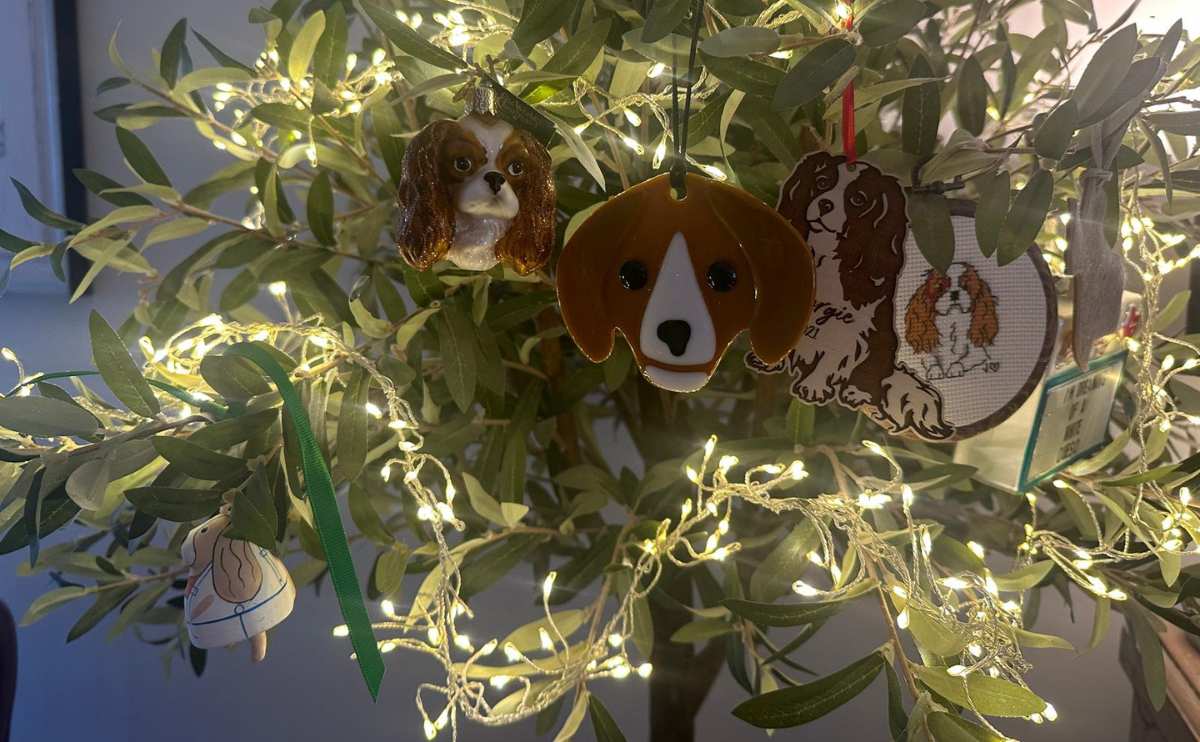
Holiday Lights & Candles
Most of us can’t resist those twinkling, shiny holiday lights, and the same goes for our pets. If your dog or cat likes to nibble on more than their kibble, they could be in for a real shock when they chew on an electric cord.
Even if you’ve placed the cords where your pet can’t get their mouth on them, be sure to check them for signs of damage and use a grounded three-prong extension cord to prevent sparks, which could burn your pet or start a fire that burns your house down.
Be sure to put holiday candles out of paws’ reach. And keep an eye on the candle wax. Hot candle wax can cause severe burns, especially on delicate paw pads.
6 Toxic Holiday Plants & Poisons
Before you deck the halls with bows of holly or other Christmas plants, make sure your decorating plan takes your pet’s health into account. Many common holiday plants are poisonous and even deadly for dogs and cats. If your dog or cat has made a holiday snack out of any of the following plants and isn’t acting cheery, call your vet for advice immediately.
- Poinsettias – Cats love to hide among the colorful red and white leaves of these plants. For some, they’re also a tempting toxic treat. Even a little lapped-up sap can cause a sore mouth or upset tummy, while a leafy snack can cause drooling, vomiting, or diarrhea. You can help ease your little fluffy one’s discomfort by taking their food and water away for a couple of hours until their stomach settles.
- Pine Needles – Whether it’s your curious cat or hungry puppy, eating pine needles can irritate their mouths, causing vomiting, diarrhea, lethargy, trembling, and weakness in their back legs.
- Holly – These classic holiday beauties can make for an ugly holiday experience if your dog or cat eats them. The main symptoms include drooling, vomiting, diarrhea, loss of appetite, and decreased activity.
- Mistletoe – Severe mistletoe toxicity is uncommon, but it could be very uncomfortable if your pet has a big appetite for mistletoe. Symptoms include vomiting and diarrhea, difficulty breathing, slowed heart rate, low blood pressure, and odd behavior.
- Christmas Tree Water – Don’t let your dog drink the water in the base of your Christmas Tree. Not only is it dirty, but it could also contain chemicals from the nutrient packets that come with the tree to keep them lasting longer.
- Ice Melt – Cold weather also means putting out rock salt to help melt slippery and icy surfaces. If you plan to put it on your driveway or walkways, make sure it’s a pet-friendly product. Many ice melts can cause damage or irritation to pets’ paw pads or make them sick if they lick it off the ground.
Pet Holiday Hazards Infographic
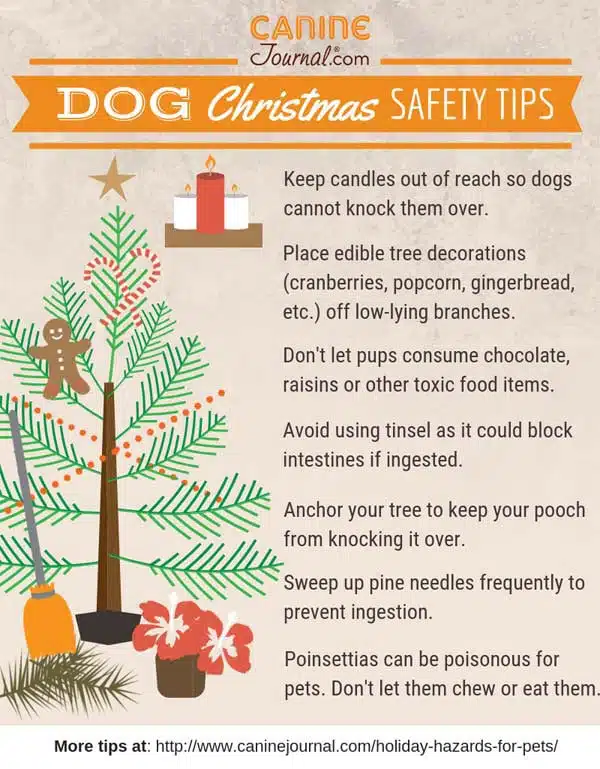
Other Holiday Tips
The holidays are a hectic time for everyone, but here are some additional tips to keep your pet calm during Christmas. If you are doing a lot of traveling this holiday season, be sure to find a responsible pet sitter to look after your dog. Finally, and most importantly, don’t forget to get your dog a gift it’s sure to love!
Tagged With: Holidays